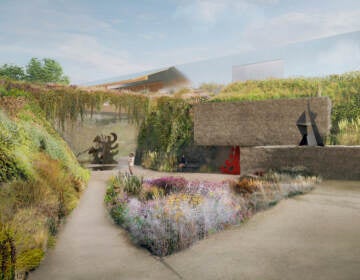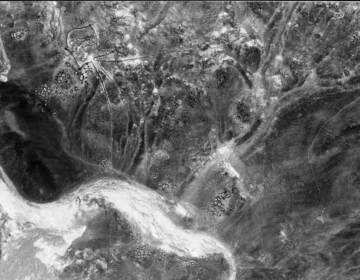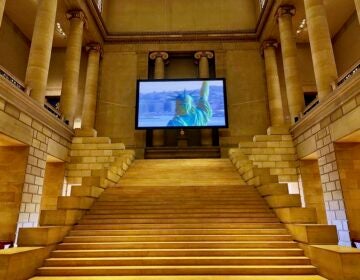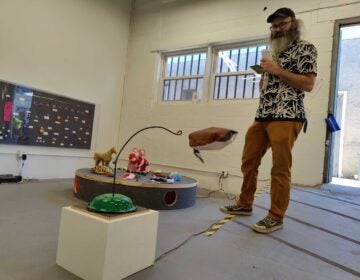National Liberty Museum shines a light on truth
In its new civic dialogue exhibition, the museum asked video installation artists for work about the truth and its slippery surface.
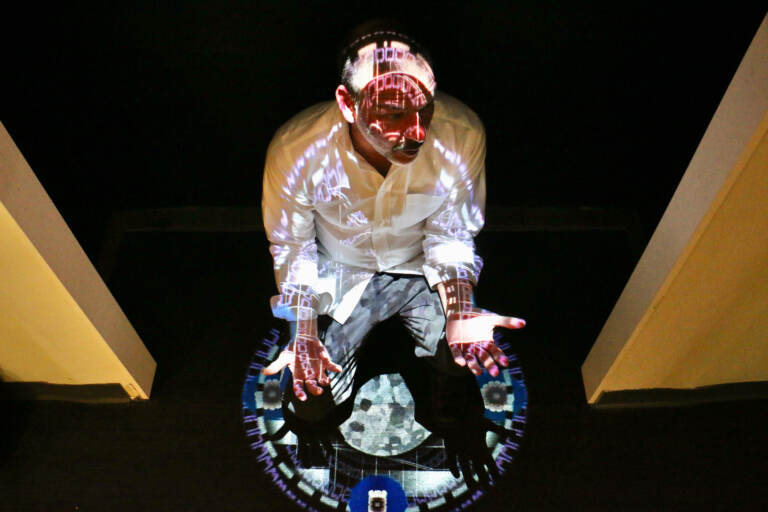
Joseph Lazaro Rodriguez crouches beneath his digital projection, ''Chromatherapeutics: Veritas DS,'' on display at the National Liberty Museum. Rodriquez's works complement the museum's exhibit about truth. (Emma Lee/WHYY)
Joseph Lazaro Rodriguez invites you to bathe in the light of truth.
The artist created an animated video mandala projected onto the floor at the top of the stairs of the National Liberty Museum in Philadelphia’s Old City. The circular projection, roughly the diameter of your shoulders, cycles through four abstract movements corresponding to mind, body, spirit, and soul.
A former nurse, Rodriguez based his piece, “Chromatherapeutics: Veritas DS,” in part on the idea of chromotherapy, or the use of light and color as healing tools in holistic and alternative medicine.
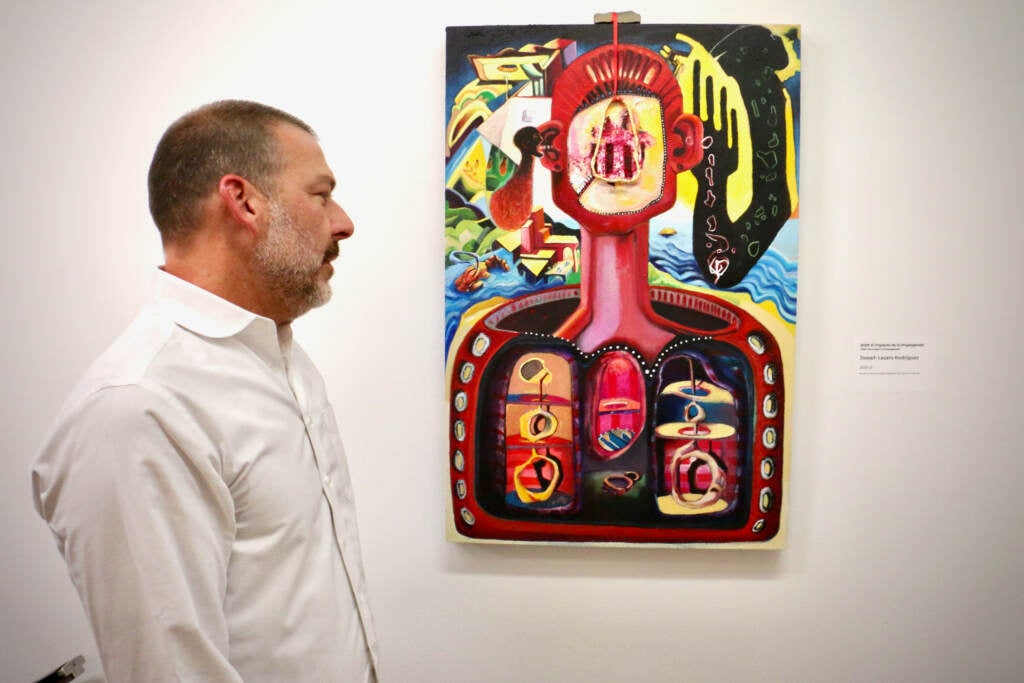
When a person stands on the illuminated circle on the ground, the light jumps up their body. Colors trickle across your head and limbs.
“I want the viewer to pass through in any way that they can move, whether it be a wheelchair or walking or standing,” said Rodriguez. “Just spend time in the light. Any duration will hopefully yield therapeutic benefits, which in this case is about truth.”
Rodriguez created the video mandala for the Liberty Museum’s new exhibition “truth*,” exploring the slippery nuances of truth as it appears in public discourse.
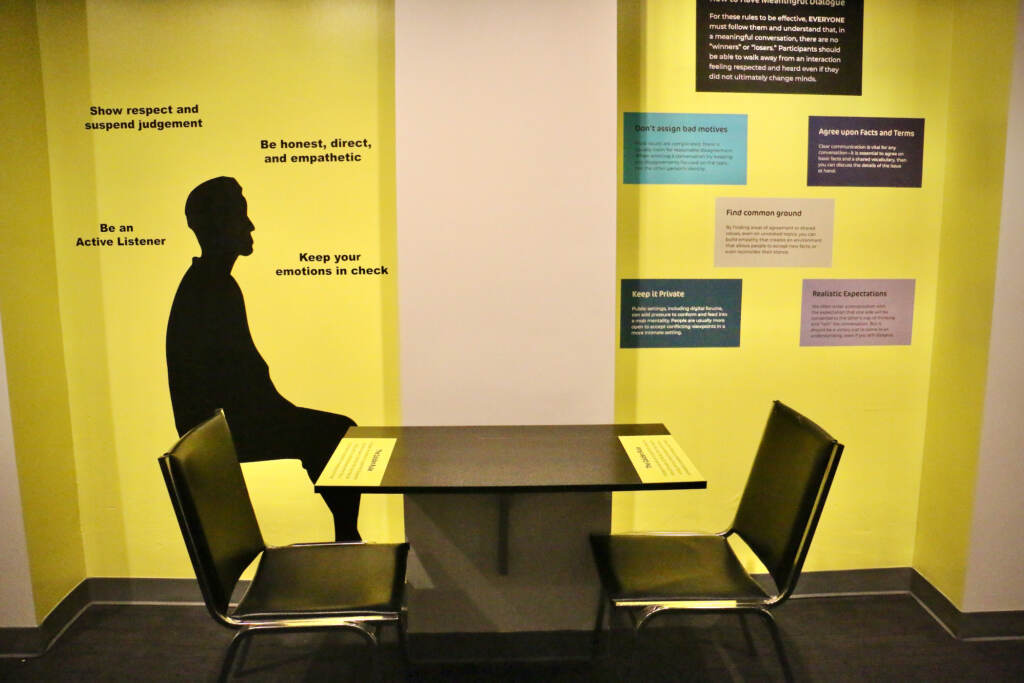
The title of the mostly educational exhibition contains an asterisk, implying truth is more complicated than it appears.
“There isn’t an absolutist definition of truth,” said director of exhibitions Aaron Billheimer. “It’s a word that’s used every day in casual conversations, but it’s also in a lot of our most sacred texts and documents that direct our lives. We wanted to introduce it purposely with a lowercase ‘t’ to break it away from that capital ‘T’ definitive Truth.”
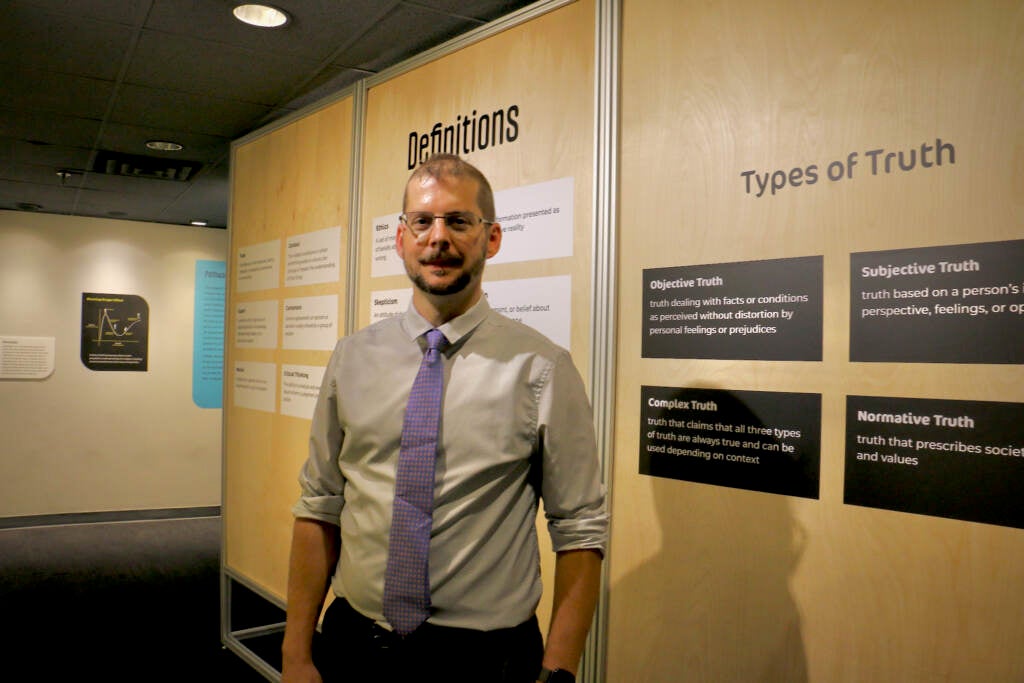
The bulk of “truth*” is in NLM’s underground gallery space beneath the lobby, where notions of truth, veracity, subjective perspective, and manipulation are explained through wall texts.
For example, the age-old axiom “A little learning is a dangerous thing,” from the 18th century poem “An Essay on Criticism” by Alexander Pope, has more recently been backed up by science. The Dunning-Kruger effect, coined in 1999, is a cognitive bias study that shows people with limited knowledge of a given subject tend to overestimate their own competence in that subject.
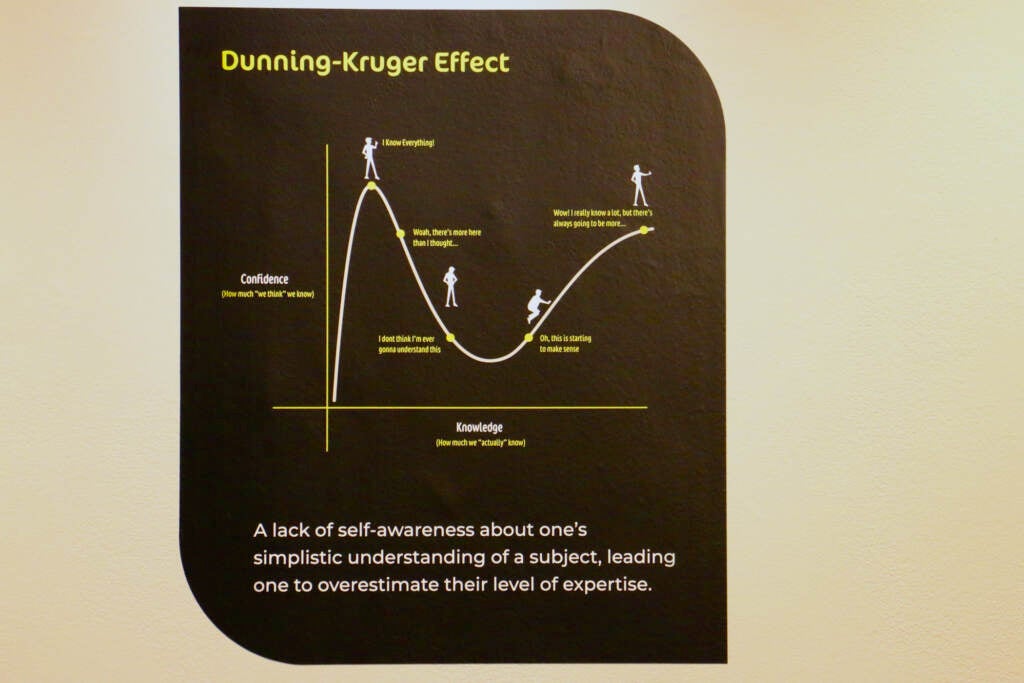
The exhibition offers explanations of how bias can affect what may seem like bedrock truths in politics, religion, history, media, and science.
“truth*” includes a historic case study of the debate between inventors Thomas Edison and Nicola Tesla and their competing electricity methods of direct current (DC) and alternating current (AC). Edison’s aggressive campaign to discredit Tesla and his alternative current affected future scientific development.
Aside from the Edison-Tesla debate, the downstairs gallery does not bring up specific incidents of bias or propaganda. Billheimer designed the exhibition to be neutral in order to encourage people to explore the vagaries of truth more openly.
“We’re saving more controversial topics in discussions around truth for programming or for digital, so that we can bring people into a space and get to them on a human level without getting people’s hackles raised,” said Billheimer. “Look at yourself. Do a little introspection. Let’s have a conversation. Let’s look at things that could be affecting the way you interact with others.”
The exhibition is part of the National Liberty Museum’s effort to reinvent itself as an institute focused on issues around contemporary American democracy and liberty. Once run by its founding Borowski family, the museum is now under new leadership and is about to launch a strategic planning process to reimagine its mission and future.
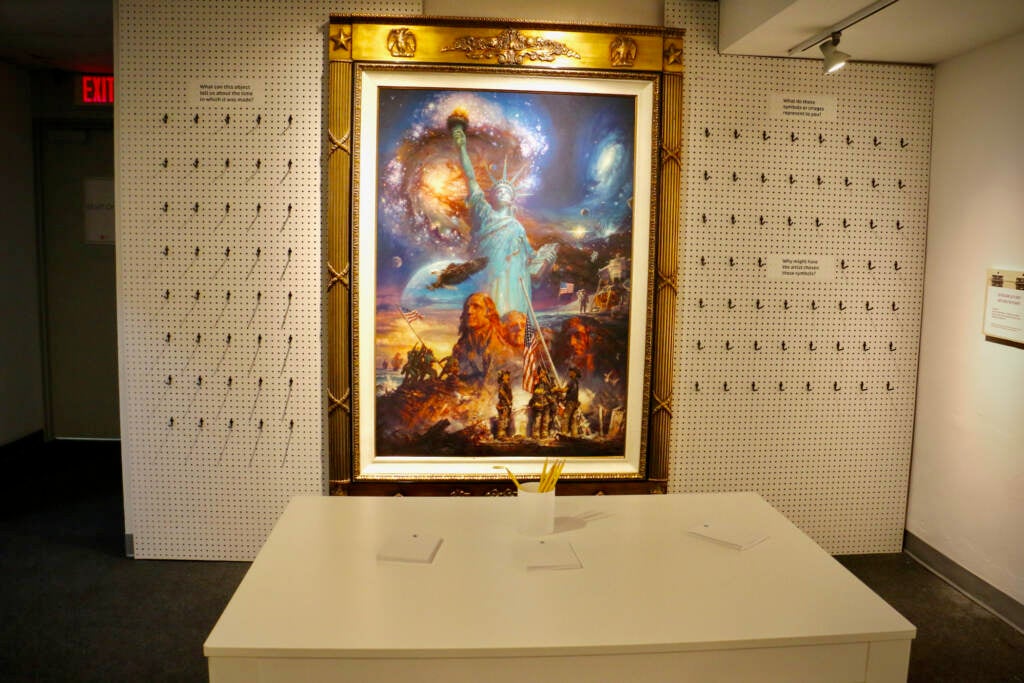
Since its founding 22 years ago, the NLM has always used art to explore notions of American liberty, in particular glass art, of which founder Irv Borowski was an avid collector. “truth*” continues that tradition, featuring work by two contemporary artists interpreting truth.
In addition to Rodriguez’s video mandala, artist williamCromar created a video installation of 42 individual projections of a woman’s mouth in close-up, mouthing the words to a phrase that might be considered controversial, or whose meanings can shift depending on the speaker. However, the viewer cannot hear the phrase; the piece is silent.
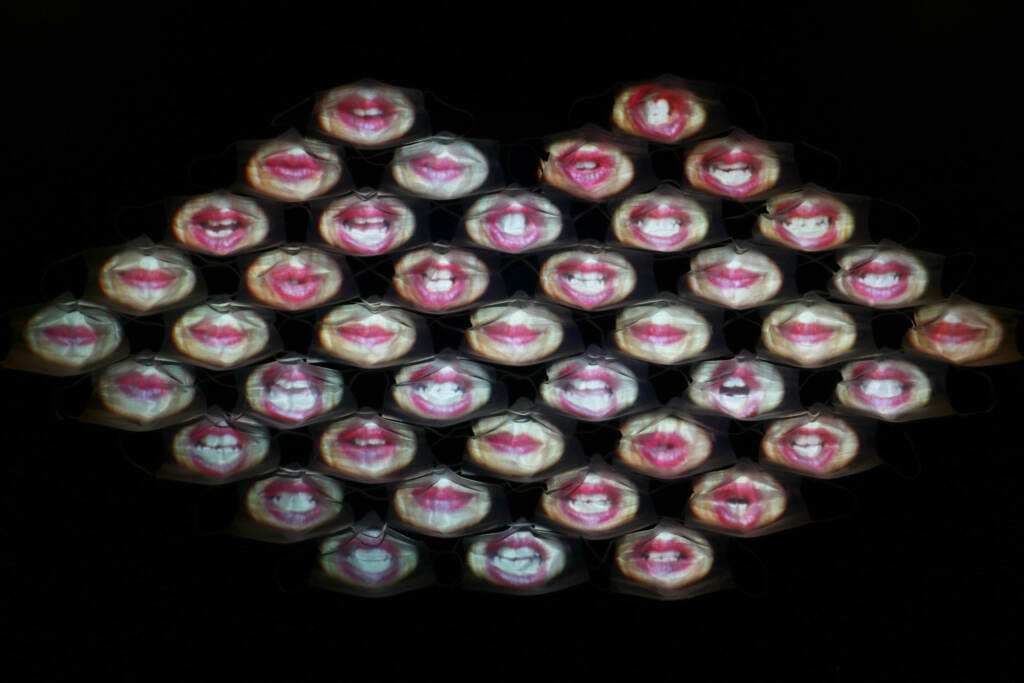
Each mouth, which is the artist’s wife’s, is projected into its own cupped surgical mask. The 42 masks of “La Trahison des Signes (The Treachery of Signs)” (a riff on Rene Magritte’s famous painting “La Trahison des Images”), are arranged in a grid resembling a mouth.
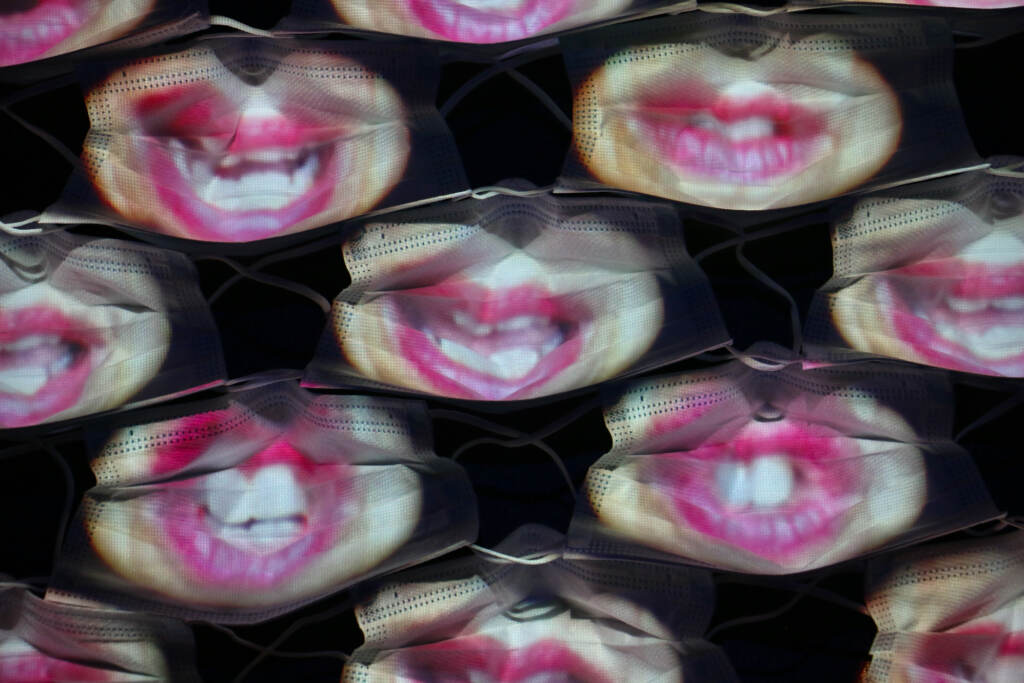
Rodiguez’s Chromotherapeutic mandala is at the top of three flights of stairs from the “truth*” gallery. Along the stairway are four of his surrealist paintings, each symbolically expressing his personal relationship with truth.
Rodiguez was born in the United States of parents who immigrated from Cuba during Fidel Castro’s revolution in the 1950s. He said they fled, in part, because of the lies and propaganda they were being subjected to during the Cuban Revolution.
“They based their lives on truth and accuracy, and it’s something that they shared with us, their children,” he said. “Critical thinking is something very important that was pushed in my home. Really thinking about what you’re reading was a very big topic in my family.”
In a previous career, Rodriguez was a nurse who worked mostly with cardiac patients at Jefferson Hospital. He later moved into healthcare informatics, managing systems for patient data. He said central to that job was seeking and protecting truth.
“Through truth – looking for the accuracy in the record — I was able to help institutions tell a more true story about patients’ experiences,” he said.
Rodriguez found a way to merge his interests in wellness therapy, truth, and art in his video mandalas. This is the second time he has been able to exhibit one: last year an earlier version of Chromatherapeutics was included in an exhibition at the Wassaic Project, an artist residency and exhibition program in upstate New York.
WHYY is your source for fact-based, in-depth journalism and information. As a nonprofit organization, we rely on financial support from readers like you. Please give today.



